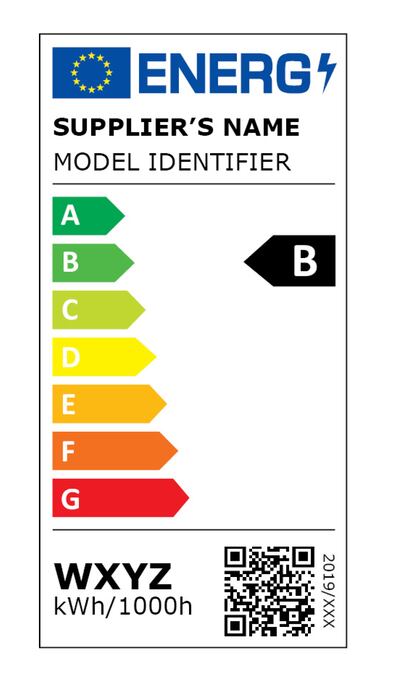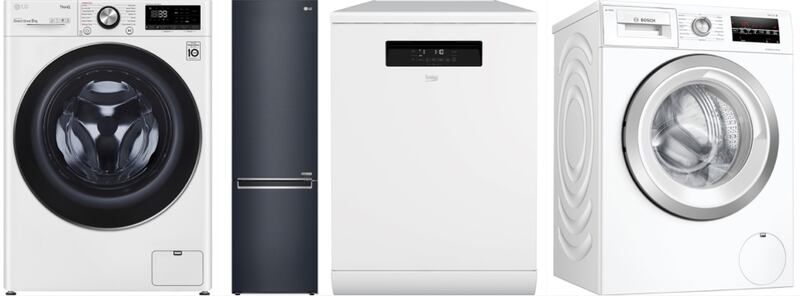Over the last few years, as anyone shopping for everything from a fridge to a TV will know, figuring out the most energy-efficient product hasn’t been easy.
That’s because, up until now, most household appliances came with an energy efficiency rating ranging from D to A+, to A++, to A+++.
That’s too subtle for most of us.
“People see the A, and just think it’s a decent machine,” says Jaimie Cantwell, head of electricals at Currys PC World.
It’s a problem the EU has corrected. From March 1st, a new energy-labelling system allows for simpler comparison between appliances, making it easier to choose more environmentally sustainable products.
The move is to be welcomed, says Cantwell, because the old labelling system was no longer fit for purpose.
“The old system of A-pluses came into effect years ago and doesn’t take account of the advances in technology that have taken place in household appliances in the meantime,” she explains.
“The ‘pluses’ were added to try and show consumers all the energy efficiency variants available in machines, but were poorly understood. As a result, it was difficult for shoppers to understand the price differences between one machine and another. They’d see an A and automatically think it was good.”

The new labelling system provides a simple A to G rating. “It will be much more obvious where a machine sits on the scale,” says Cantwell.
Some people will be surprised so see where their currently A-rated machine sits on the new scale.
“There is no change to the energy efficiency of your current appliance, but it may drop a few letters on the new scale,” Cantwell emphasises. “Something that is currently A+++ may be now be C-rated. That is because the new ratings scale is held to a higher standard, with stricter criteria.”
Clearer icons at the bottom of the label will provide additional detail about noise, water consumption or screen size. Handy QR codes you scan with your phone will provide additional information too.
Delighted
Cantwell and her colleagues are delighted. “It is definitely to be welcomed because it makes it much easier for consumers to make a decision,” she explains.
Currently, for example, a TV’s decibel rating doesn’t “resonate” with consumers, she says, “because it doesn’t give any guidance as to what it means”.
The new labelling will still see noise measured in decibels but also uses a four-point scale to explain it, and it’s not just televisions. “Very often with appliances like washing machines, it is only when it arrives at someone’s house that they realise how loud it is,” says Cantwell.
That may be fine if your washing machine is out in the garage, but if it’s in an open-plan apartment, it’s not.
The new EU labelling also makes it easier to assess water usage over time. “People have a misconception that dishwashers use a lot of water. Yet some dishwashers use three times less water than you would doing dishes by hand. The new labelling breaks this down in ways that make more sense in terms of how we live,” says Cantwell.
Previously a washing machine label would give a generic figure in terms of annual water usage. “A person with a big family putting through four washes a day will use a lot more water than someone living on their own doing two washes a week, so that kind of generic information wasn’t that helpful,” she explains.
These are not gimmicks, these are real-life benefits
The new labelling shows how much water a machine will use per cycle as well as its energy consumption in kWh per 100 cycles. This makes comparisons easier and shows the true “cost in use” of an appliance.
Higher-rated machines will have additional savings functionality, such as smart washing machines that use sensors to determine the volume of clothes in the drum, and how dirty they are, and “auto-doses” the detergent accordingly, eliminating waste.
“These are not gimmicks, these are real-life benefits, and the great thing about the new labelling system is that it paves the way for more technology to be introduced to machines as standard because it incentivises the manufacturers to secure the top ratings,” she says.
The Go Greener products to buy

To celebrate the EU’s new household appliance labelling system, Currys PC World has launched a new Go Greener campaign, to help you to find top technology that saves water, is more energy efficient, and reduces waste.
Throughout the month of March it is rewarding customers who make greener choices with special offers across a range of almost 300 Go Greener products, including price promotions, free delivery (from Wednesday, March 3rd), and free recycling of old products.
LG TurboWash 360 F6V1009WTSE 9kg 1600 spin washing machine
LG has a patented motor called “direct driver” which improves efficiency, saves energy and is kinder to the planet, resulting in an A rating, the highest of the new regulations.
LG Centum GBB92MCBAP 70/30 fridge freezer
One of the only A-rated fridges on the market, LG’s innovative technology leads the way with high-grade compressors and increased insulation to minimise temperature loss – and less food waste too.
Beko HygieneShield DEN36X30W full-size dishwasher
D is expected to be the highest rating of dishwashers, but Beko includes an Auto Program that adjusts temperature and wash time based on how dirty the dishes are, so you won’t use excess water or electricity.
Bosch Serie 6 i-DOS WAU28S80GB 8kg 1400 spin washing machine
i-DOS is an intelligent technology from Bosch which checks how dirty your clothes are and automatically measures the exact amount of detergent and water needed for each load.
Discover more about the Go Greener product range at www.currys.ie










